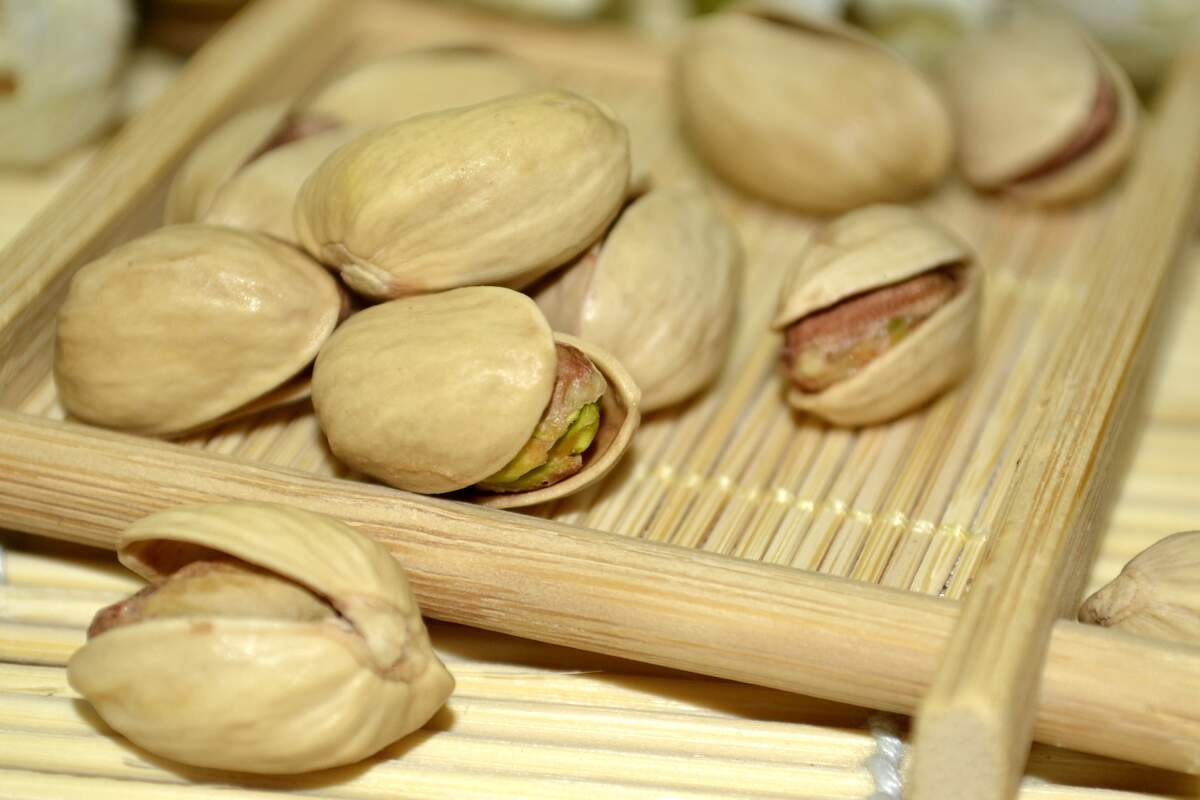

National Pistachio Day
Also known as
World Pistachio Day
Observed
annually on February 26th
Dates
Tags
Food & Drink
Snacks & Desserts
Hashtags
Sources
https://economictimes.indiatimes.com/news/new-updates/national-pistachio-day-2023-know-5-health-benefits-of-eating-pistachios/articleshow/98249986.cms?from=mdr
https://en.wikipedia.org/wiki/Pistachio
https://www.cooksinfo.com/pistachio-day
https://www.ncbi.nlm.nih.gov/pmc/articles/PMC4890834/
https://www.anrdoezrs.net/links/100298379/type/dlg/https://www.newspapers.com/image/827669964/
https://www.punchbowl.com/holidays/national-pistachio-day
https://www.webmd.com/food-recipes/benefits-pistachios
National Pistachio Day is for enjoying pistachios and creates awareness about the health benefits pistachios provide. The nutrition-packed pistachio contains antioxidants like lutein, zeaxanthin, anthocyanins, proanthocyanidins, and other flavonoids that support eye health, increase immunity, fight free radicals, and protect against some forms of cancer. They are high in fiber and a good source of vegetable protein, which provides satiety for a longer period of time, helping to control weight. Pistachios that need to be shelled also promote conscious eating, which also helps with weight control. Pistachios aid digestion by acting as a prebiotic and promoting healthy gut bacteria. Pistachios have a low glycemic index, so they don't spike blood sugar, and thus aid in maintaining healthy blood sugar levels and controlling type 2 diabetes.
Pistachios are high in healthy monounsaturated and polyunsaturated fats. Compared to most nuts, pistachios have a lower overall fat content, higher essential amino acid ratio, and higher percentage of branched-chain amino acids. Their fats are protective of cardiovascular health and may help stave off metabolic syndrome. Pistachios may improve blood vessels, improve cholesterol, and reduce blood pressure. Pistachios also contain a significant amount of minerals, like potassium, phosphorus, magnesium, and calcium, and vitamins K, A, E, and C, and several B vitamins.
Although pistákion is Greek for "the green nut," pistachios are seeds, not nuts, and they range in color from green to yellow. They come from pistachio trees, which produce about 50,000 seeds every two years, about 110 pounds worth. They have a mildly sweet flavor but need to be cracked out of their hard shell to be eaten.
Pistachios likely originated in Central Asia—in the areas of present-day Iran and Afghanistan—and Southwest Asia. They were widely cultivated in the Persian Empire, before making their way to the West. They moved from Assyria through Italy and then spread around the Mediterranean areas of Southern Europe and North Africa. In 1904 and 1905, David Fairchild of the United States Department of Agriculture introduced pistachios to the United States from China. Pistachio production didn't increase dramatically in the country until the 1970s. Today pistachios are produced commercially in New Mexico, Arizona, and California.
Iran had long been the largest pistachio producer, but the United States caught up to them by the early 2000s. In 2020, there were 150,000 pistachio farmers in Iran, over two-thirds of whom were small-scale producers using rudimentary production methods. In contrast, there were 950 pistachio producers in the United States, who were large-scale producers who used efficient, mechanized production techniques. Together, the United States and Iran cover about 70 percent of the world pistachio market. Pistachios are still widely cultivated in the Mediterranean region, with Turkey being the third largest producer.
Pistachios can be purchased shelled or unshelled, as well as roasted or salted. They can be eaten plain but can be used with and to make many other foods. Pistachios can be used to make baklava, biscotti, ice cream, spumoni, halva, kulfi, Sohan, and Turkish delight. They can be found in mortadella, granola, and pesto, and in pastas, marinades, crusts, salsas, and stir-frys. They can be used to make pistachio butter as well as Watergate salad. They can also be found on tops of salads, dips, and yogurt.
How to Observe National Pistachio Day
- Pop some plain pistachios! While you can buy them unshelled, removing their shells yourself can be even more fun!
- Top salads and yogurts with plain pistachios or pistachio granola.
- Pick up some pistachio ice cream.
- Put together some spumoni.
- Bake some baklava or biscotti.
- Make some pistachio pesto or butter.
- Assemble some pistachio cream pie.
- Whip up some Watergate salad or pistachio dip.
- Try your hand at halva or Sohan.
- Cook some pistachio pasta or toss some pistachios into a stir-fry.





















